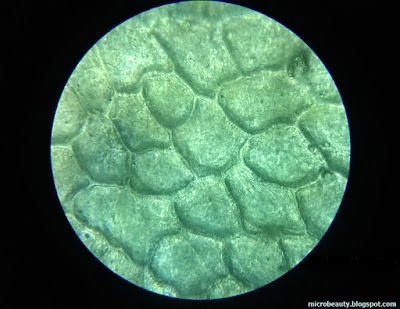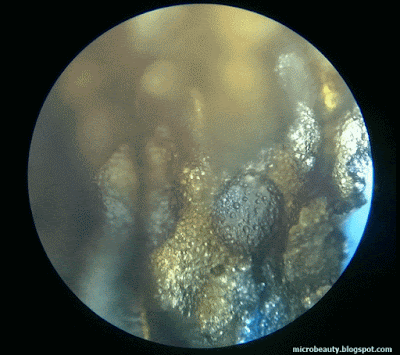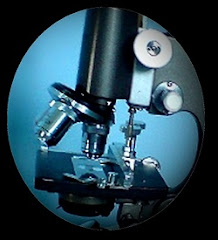 | ||
| Capsicum(bell pepper) skin. Top surface. Magnification 100 times. |
 |
| Capsicum skin. Top surface. Magnification 450 times. |
🔵 Some Facts:
The bell pepper (Capsicum) does not produce capsaicin, a chemical that can cause a strong burning sensation.
The most common colors of bell peppers are green, yellow, orange and red.
Peppers are native to Mexico, Central America, and northern South America. Pepper is imported to Spain in 1493. From there spread to other European, African, and Asian countries.
The bell pepper (Capsicum) does not produce capsaicin, a chemical that can cause a strong burning sensation.
The most common colors of bell peppers are green, yellow, orange and red.
Peppers are native to Mexico, Central America, and northern South America. Pepper is imported to Spain in 1493. From there spread to other European, African, and Asian countries.
🔵 Cell
🔷 External links.



















